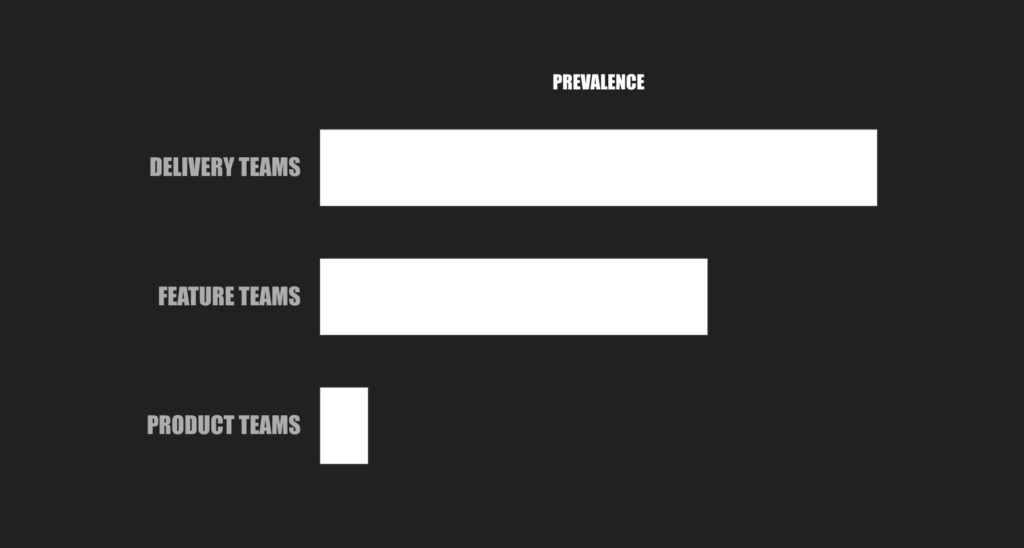In the tech world, there are really 3 types of “product teams,” from most to least common:
1. Delivery Teams: Non-cross-functional dev teams
2. Feature Teams: Output focused cross-functional (XFN) teams
3. Product Teams: XFN groups empowered to achieve outcomes
As Marty Cagan explained in his seminal piece on Product vs Feature Teams, while feature teams and product teams look very similar on the surface, they are dramatically different in:
▪️ how they operate
▪️ the level of empowerment and accountability
▪️ and the responsibilities of the product manager
In an empowered product team, responsibilities break down as:
▪️ the PM is responsible to ensure the product has value and is viable for the business
▪️ the designer is responsible for ensuring usability
▪️ and the engineering lead is responsible for feasibility
In a feature team, the responsibilities of the designer & engineering lead are the same: usability and feasibility. But, value and viability are the responsibility of the stakeholder or executive that requested the feature on the roadmap.
Superficially, product and feature teams look the same, but the differences run deep. Because the team is not empowered, it is very hard to attract and retain true product designers. The product manager role becomes mainly project manager.
There is often similar frustration with engineers. The engineers in a feature team become relegated to delivery. They become uninspired, because they do not have a say in the work they are doing.
There are very few true product teams. These teams do exist at tech companies, like Google, Meta, Netflix, and Microsoft. But, in many other places, the teams may have hired PMs who want to be on product teams, but are actually on delivery or feature teams.
It is imperative for product leaders and PMs in feature teams to slowly shift the culture toward becoming product teams. This is a difficult transition that requires involvement from the head of product to drive cultural change with stakeholders & the engineering organization.
The potential payoff for teams who move to an empowered, outcome-focused model is very high. There is a certain magic that happens when the team is empowered to solve outcomes. You get the best out of engineers, designers, and PMs alike. You also see far lower attrition.
It’s no wonder the best tech companies – like those documented in PM texts such as Cagan’s Inspired & Empowered, as well as Torres’ Continuous Discovery Habits – utilize product teams.
Soon, every company will have a PM. Product leaders at these companies have a responsibility to help their product teams become true product teams, not delivery or feature teams.
Takeaways
A team of just engineers is a delivery team. Cross-functional teams focused on output are feature teams, not product teams. Being on a feature team is frustrating for PMs, engineers, & designers alike. The ideal is an empowered, outcome-focused XFN product team.
